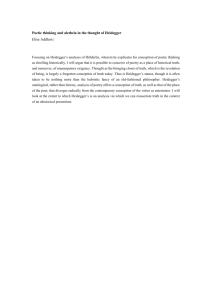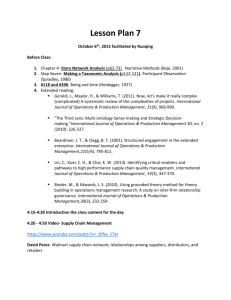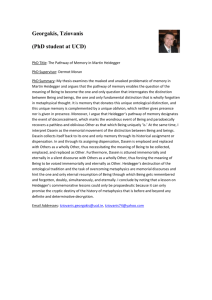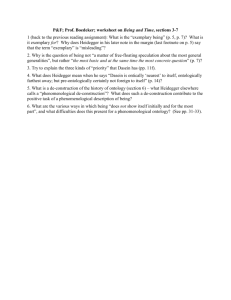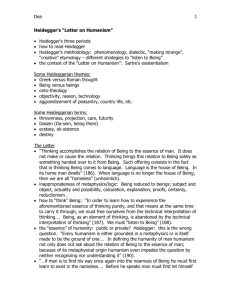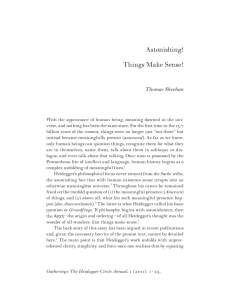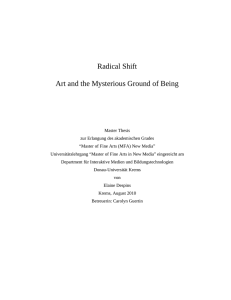Being in the World Being and Time,
advertisement
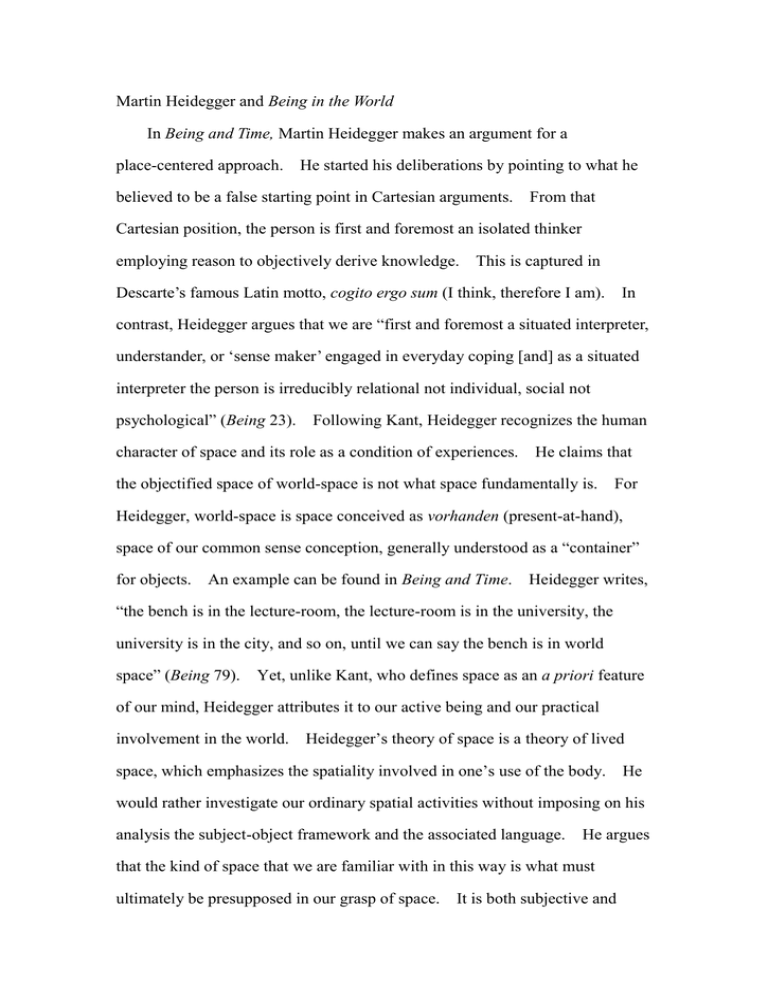
Martin Heidegger and Being in the World In Being and Time, Martin Heidegger makes an argument for a place-centered approach. He started his deliberations by pointing to what he believed to be a false starting point in Cartesian arguments. From that Cartesian position, the person is first and foremost an isolated thinker employing reason to objectively derive knowledge. This is captured in Descarte’s famous Latin motto, cogito ergo sum (I think, therefore I am). In contrast, Heidegger argues that we are “first and foremost a situated interpreter, understander, or ‘sense maker’ engaged in everyday coping [and] as a situated interpreter the person is irreducibly relational not individual, social not psychological” (Being 23). Following Kant, Heidegger recognizes the human character of space and its role as a condition of experiences. He claims that the objectified space of world-space is not what space fundamentally is. For Heidegger, world-space is space conceived as vorhanden (present-at-hand), space of our common sense conception, generally understood as a “container” for objects. An example can be found in Being and Time. Heidegger writes, “the bench is in the lecture-room, the lecture-room is in the university, the university is in the city, and so on, until we can say the bench is in world space” (Being 79). Yet, unlike Kant, who defines space as an a priori feature of our mind, Heidegger attributes it to our active being and our practical involvement in the world. Heidegger’s theory of space is a theory of lived space, which emphasizes the spatiality involved in one’s use of the body. He would rather investigate our ordinary spatial activities without imposing on his analysis the subject-object framework and the associated language. He argues that the kind of space that we are familiar with in this way is what must ultimately be presupposed in our grasp of space. It is both subjective and objective. The primary human reality, as Heidegger argues, is Being in the world—being engaged with others. The world is experienced through our bodies, and we cannot separate our selves from this world. In other words, the physical world is an integral part of our existence and the basis of our perceptions. The sort of space we deal with in our daily activity is “functional” or zuhanden (ready-to-hand), and Heidegger’s term for it is “region” (Gegend). The places where we live and work—the living room, the working place, the park, etc.—all have different regions that organize our activities and determine the locations of available “equipment.” Regions differ from space viewed as a “container” in that regions are the “referential” system of our context of activities. This is to say that regions are essentially indexical. The indexical “here” does not identify a point in a neutral, container-like space, but rather, our spatial activities determine a “here” with respect to the things we deal with and the way we move. Regions are inherently organized by activities that emanate from a center of action. Put another way, the perspective presupposed in world-space is a standpoint of an infinite observer; whereas the perspective in a region is a finite perspective of an acting agent. Heidegger’s purpose is to claim that referential functionality is an inherent feature of space itself, and not just a “human” characteristic added to a container-like space. “Regions” refer to our activities since they are established by our ways of being and our activities. Our activities, in turn, are defined in terms of regions. Only through the region can our de-severance (Ent-fernung) and directionality (Ausrichtung)—two features of Dasein’s spatiality—be established, since our objects of concern always appear in a certain context, a certain place, and a certain direction. We always orient ourselves and organize our activities within regions already given to us. To be sure, this orientation is relative to the body and the world, developed as the body interacts with the world more constantly and their spatial relationship grows stronger and stronger.
